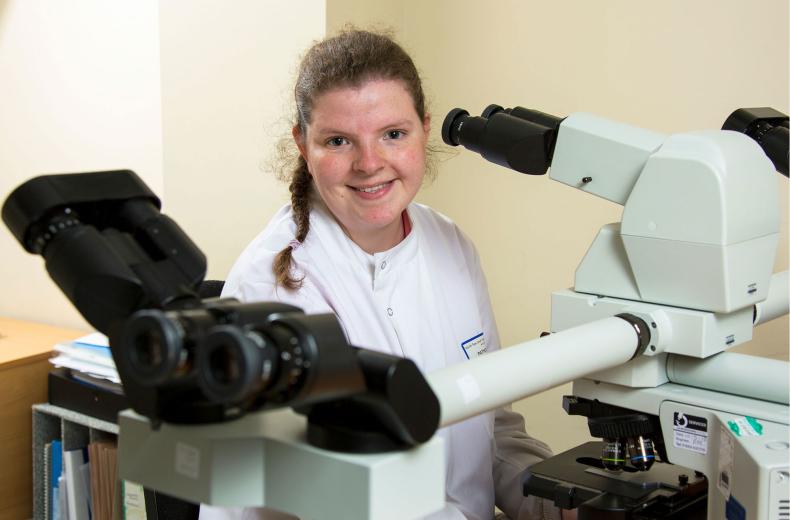Guidance on
Understanding your local community and your workforce.
Ensuring your recruitment and assessment processes are inclusive and accessible.
Helping to ensure your organisation is visible and attractive to disabled applicants.
Embedding and maintaining the highest quality workplace support for disabled staff.
Understanding complex areas such as positive action and reasonable adjustments.

This resource will be of interest to employers and managers who have responsibility for the recruitment or workplace support of staff
Introduction
Recruiting and retaining a skilled talent pipeline, that comprises staff with the right skills to deliver high-quality patient care is a key focus for the NHS. As organisations are faced with increasing supply demand, it’s important that the workforce is supported to thrive and disabled applicants are encouraged to apply for roles in organisations across the country.
Attracting and retaining disabled people and those with learning disabilities and difficulties (LDD) requires an organisation-wide approach, underpinned by shifts in culture, and authentic and open leadership. A diverse workforce will include those from protected characteristic groups:
Protected characteristics (outlined in the Equality Act 2010):
- Age
- Disability
- Gender reassignment
- Marriage and civil partnership
- Pregnancy and maternity
- Race
- Religion or belief
- Sex
- Sexual orientation
- Download this chapter
- Introduction
Making apprenticeships available to all

There are a number of factors to consider make when offering apprenticeships to disabled candidates, including:
- understanding your local community and your workforce
- ensuring your recruitment and assessment processes are inclusive and accessible
- helping to ensure your organisation is visible and attractive to disabled applicants
- embedding and maintaining the highest quality workplace support for disabled staff
- understanding complex areas such as positive action and reasonable adjustments.

Hear how Hampshire Hospitals NHS Foundation Trust (HHFT) is supporting apprenticeships for those with learning difficulties and disabilities (LDD).
HHFT has been delivering the Project Choice programme since 2018, which is a supported internship for young people with a learning disability, difficulty and/or autism.
HHFT recruits around 12 new interns per year and aims to make each individual ‘work ready’ by the end of the internship. Project Choice is funded by Health Education England (HEE) and runs over the academic year with three different rotations, tailored to the needs of each of the interns at HHFT.
After the success of Project Choice, the trust then wanted to increase their development opportunities for its LDD staff. To offer these opportunities, HHFT committed to using its own training provider experience to pilot an LDD programme funded by HEE in July 2020, which has been developed into their supported apprenticeship programme and is now funded using the apprenticeship levy.
The supported apprenticeship programme is tailored to the needs of LDD staff and includes the following moderations.
- An 18-month course instead of the usual 15 months to support pace of learning.
- One-to-one group training and learning support.
- Protected off-the-job learning support on a weekly basis from their assessor.
- Personal and IT development such as: using email systems, establishing regular study skills routines such as uploading work portfolios and continuous communication with their assessor.
- Weekly structured learning plans with clear instructions to help individuals complete tasks.
- Reasonable adjustments such as 'task chunking' and using alternative assessment and learning methods.
- Preparing for end point assessments throughout the programme to help learners familiarise themselves with assessment styles.
In the video below, we spoke to the trust as part of our big chat series where they gave us more information about the programme.
Understanding your local community and your workforce
What does your workforce and local community look like?
As a starting point you need to review your workforce data. Robust and accurate data is key to having a realistic understanding of gaps or challenges. It will help with:
- analysing your workforce
- identifying potential talent pools
- establishing a stronger talent pipeline.
HR and board-level engagement
Your first step should be to communicate areas of improvement (for example increasing the number of people with a disability in your workforce) in discussion with both HR colleagues and board-level colleagues.
Both departments are key to making sure there is operational capacity and understanding alongside strategic buy-in, and that change can be effective and sustained. It’s important to have HR colleagues on board when discussing the need for implementing change to an organisational approach, as they will offer support and guidance to recruiting managers. Securing buy-in from board-level colleagues around any change to recruitment practice is a powerful tool in engaging staff across the organisation who will see that this agenda is a strategic priority.
Culture
Establishing and maintaining a positive work culture within an organisation underpins the positive experience of staff, and the likelihood that it’s viewed as an attractive employer to those looking to join the NHS. Embedding and cascading inclusion throughout your organisation is the first step to building an inclusive culture.
The experience of disabled staff is now measured and reported on as part of the Workforce Disability Equality Standard (WDES) which is legally mandated in the NHS Standard Contract. Your organisation will be measured against ten metrics specifically focused on this staff group’s experiences. This includes a focus on the recruitment practices of the organisation and how inclusive they are. Ensuring that your organisational culture helps staff to feel supported, engaged and listened to will play a large part in reporting against the WDES metrics.
Individual staff and line managers can contribute to the WDES work by ensuring they have a clear understanding of your organisation’s process and policy for supporting disabled staff.
Understanding your organisations offer
We know from our research with employers across the NHS that a key barrier to increasing the recruitment of disabled staff/those with LDD is line managers understanding – specifically what support and action to take, and the impact of prejudice and stereotyping.
As a line manager, it is vital that you understand the approach taken by the organisation with regards to the support you can offer disabled staff and those with LDD.
Consider the following questions and find out the answers to any you’re not aware of.
- Do you know who in your workplace is responsible for co-ordinating or organising workplace support for disabled staff, including reasonable adjustments?
- How to access reasonable adjustments for your staff?
- The sickness absence leave policy for staff with disabilities?
- What kinds of adjustments can be made in your work area?
- How to refer staff to occupational health?
- If your organisation has a disabled staff network?
- If your organisation is Disability Confident?
- How to apply for Access to Work funding and what it’s used for?
- Download this chapter
- Making apprenticeships available to all
Attraction and application
How your organisation is viewed in the community will have a significant impact on the recruitment of new staff to your organisation. Your public-facing image should represent the diversity that the trust currently celebrates or which it seeks to hold in the future. Adverts, job specifications and application forms are hugely important in helping to ensure you attract the right talent.
You can use easy read formats to ensure your written information is simple and easy to understand. Easy read is often used when engaging with people with learning disabilities, but it can also be used for other groups. You can make your application forms, adverts and specifications easy read by:
- using simple words
- including images to support the text
- making it large print
- using plain fonts
- keeping sentences short.
Positive Action
As an employer, positive action enables you to support an individual who may have faced disadvantage in accessing employment due to a protected characteristic. Positive action is legal under the Equality Act 2010.
You could take positive action in recruitment in activities such as:
- Holding events to attract specific under-represented groups, such as those with learning disabilities.
- Offering an interview in an alternative format for a disabled candidate. For example, instead of a traditional formal interview, you can invite an individual to carry out the tasks relevant to the role for a short period of time while being assessed. This is known as a working interview.
The role of bias in recruitment
This bias is known as unconscious or implicit bias. It’s important to recognise that we all have an unconscious set of bias. If left unrecognised, bias will inform your decision-making and can negatively affect fair judgement, which should always be applied in recruitment practice.
Here are a handful of tips to get you started on ensuring you mitigate against the impact of bias in your recruitment.
Make it clear who is the first point of contact for any potential applicants. You could establish an ‘application buddy’ process, where an individual provides additional support to the applicant throughout.
Have open conversations about disability and establish if reasonable adjustments to the recruitment process are needed from the outset. This makes it clear that your organisation values disabled staff and is happy to make any adjustments, such as:
- hearing loops
- accessible software for any computer-based activity
- a wheelchair
- accessible space for all activities
- papers in large print and colour filters
- available access to a computer for any written task, for those who struggle with paper-based activity.
Do not make assumptions and always consider conversations with the individual first and foremost.
- Download this chapter
- Attraction and application
Interviewing accessibly

Interviews can be daunting for most people. The traditional interview style involves a panel asking a candidate a set of unseen questions, is reliant on strong memory recall, and the ability to apply this thinking to set criteria. Using this approach to assessment can be challenging for those with anxiety, neurological conditions or disabilities, or those with neurodiversity such as those with autistic spectrum disorders (ASD).
Pre interview checklist
- Is the environment relaxed and friendly?
- Is the environment accessible for individuals?
- Do they require any equipment or adjustments?
- Have you explained the structure of the day to applicants and provided a timetable?
- This is useful if the day has several parts such as a group task, written task and interview.
During the interview
- Have you explained the role they are applying for?
- You could also provide information about the organisation, team and/or department.
- Have you provided a copy of the interview questions to the candidate? The interview should not be a test of memory.
- Have you highlighted any staff networks or campaigns that demonstrate the inclusive culture of the organisation?
Assessment exercises
Following shortlisting, the next stage of the recruitment journey is establishing the exercises to assess candidates. These could include traditional interviews, assessment centres and/ or group tasks, and written tasks.
There are specific ways you can mitigate against barriers and exclusion for those with disabilities/learning disabilities in assessment. Ask or provide an opportunity for applicants to share any needs they have - this is key to understanding whether an assessment process is appropriate for them.
Making an offer
For those who declare a learning disability, or other neurological condition/neurodiversity, it is crucial that you use accessible language when communicating the outcome of the interview stage. For successful candidates, you can use this checklist.
- Explain clearly that they have been successful in securing the role.
- Ask whether the individual has a notice period to work in any current role or training course.
- Explain the processes which need to be completed from the organisation’s point of view.
- Ask the candidate if they have any questions at this point.
- Explain that you need to carry out right to work and reference checks (and ensure that they provided the relevant details)
- Explain how long this process is likely to take and why it is done
- Explain that you/ a specific colleague will be on hand to (provide contact details) and answer any questions they may have at any point.
You could invite the individual to visit the workplace ahead of their start date. This could ease anxiety and help plan additional considerations such as access needs. If they accept the offer, it would be useful to show them:
- the space they will be working in
- communal areas, such as toilets or catering
- car parking or how the building/office space is accessed
- introduce them to their immediate team or induction buddy if you have this system set up in your organisation.
- Download this chapter
- Interviewing accessibly
Onboarding and induction

Before the first day
Prior to a new starter’s first day, it could be useful to have an open discussion about the way the individual would like to work. This could include anything from reasonable adjustments within the workplace, or needs outside of work, such as parenting or caring responsibilities.
Make sure that any equipment the individual needs to carry out their role, such as accessible software or a hearing loop, is in place.
Having these conversations at an early point demonstrates that you support disabled staff, and value their work/life balance. You can also ask if they would like any of this information to be shared with their immediate colleagues.
In addition, you could let the individual know how the organisation supports its disabled staff, for example disability confident leader accredited or staff networks.
First day and induction
On a new starter’s first day, make time to talk through their role and all aspects of the working environment.
Discuss at this early point if the individual requires any support to be set up through the government’s Access to Work scheme.
It is crucial to explain that the individual needs to apply for this, but you could offer to support them in accessing and completing an application. You can learn more about reasonable adjustments in the dedicated section of this toolkit.
- Download this chapter
- Onboarding and induction
Ongoing workplace support
Ongoing conversations
It’s important to have both early and ongoing conversations with new starters regarding their needs. Ensuring you understand any adaptations or necessary equipment will help them settle in quickly and thrive in their new role. Ask the individual if they’d welcome a conversation with yourself and teams such IT, HR, occupational health and estates in advance to ensure that you enable the best workplace experience for them. In these meetings the individual can explain their needs, and the relevant team can explain what is available to assist them.
Ensure that the individual knows how to join any staff networks should they wish too. Having a network can provide an opportunity for peer support to staff with specific characteristics. It’s also a useful vehicle to ensuring that staff voices are heard on organisation-wide issues.
We have two videos of deputy CEO and director of people, Emma Wood, filmed at Gloucester Hospitals NHS Foundation Trust.
In the first video from Emma, she talks about why it’s vital to have ongoing conversations with disabled staff to ensure they feel valued at work.
Occupational Health
The occupational health (OH) department or provider can support the individual by assessing the workplace needs of staff and make recommendations.
HR
The support that your HR department can offer could include explaining how, when and why to refer someone you line manage to occupational health, line management skills, or disability awareness training.
HR can also provide more general training to all members of staff about specific disabilities or about changes everyone could make to support disabled members of staff/ staff with LDD.
Further workplace support
Your HR department may be able to provide specific support such as upskilling you to leave a message on a textphone for someone who uses that method of communication.
HR can also help to create a workplace passport. This document contains key information about an individual that they can take with them if they move between teams or departments throughout their career. This could include information about their disability or LDD, their current support package including any adjustments, and information about their communication and learning style.
This resource can be helpful for staff working within the NHS as staff often move between organisations. Using a workplace passport system is low cost and can reduce stress, administrative work and duplication for both the staff members and their line manager.

- Download this chapter
- Ongoing workplace support
Reasonable adjustments
HR departments can advise you about both reasonable adjustments and Access to Work as ways to support the disabled staff you line manage.
What is a reasonable adjustment?
Reasonable adjustments are required by law under the Equality Act 2010. A reasonable adjustment is any change in the workplace which ensures that disabled staff, or staff with learning difficulties/ disabilities (LDD), are not substantially disadvantaged when doing their job. These changes can be made to the physical environment, the employee’s working conditions or hours, to the organisation’s policies, or provide any additional equipment or support needed.
How much do reasonable adjustments cost?
Many reasonable adjustments are free, such as magnification software, or inexpensive. Reasonable adjustments, such as specialist software, cost more but are worth it for the increase in productivity.
What is the difference between a reasonable adjustment and access to work?
Access to Work is a government grant scheme which reimburses individuals for adjustments which are more specialised or may not have been reasonable in the circumstances and cost up to asset value per year.
Access to Work cannot pay for reasonable adjustments which should be provided by the employer.
In this video, we follow the story of Paul Belk, payroll officer at Northumbria Healthcare NHS Foundation Trust. We learn about the reasonable adjustments the organisation has put in place to support him as a wheelchair user with a neurological condition at work.
Examples of reasonable adjustments
The reasonable adjustments listed below are examples of ways to make changes for disabled staff/staff with LDD. This is not a complete list and we would always recommend having an ongoing discussion about what would be useful for each individual, as people with similar conditions or disabilities may need different adjustments. Some of these may be provided by individual organisations, or through Access to Work.
This video features occupational therapist, Naomi Miller, who has severe dyslexia. Filmed at East London Foundation Trust, we find out how adjustments to Naomi’s shift pattern and ways of working support her to deliver excellent patient care.
- Download this chapter
- Reasonable adjustments



